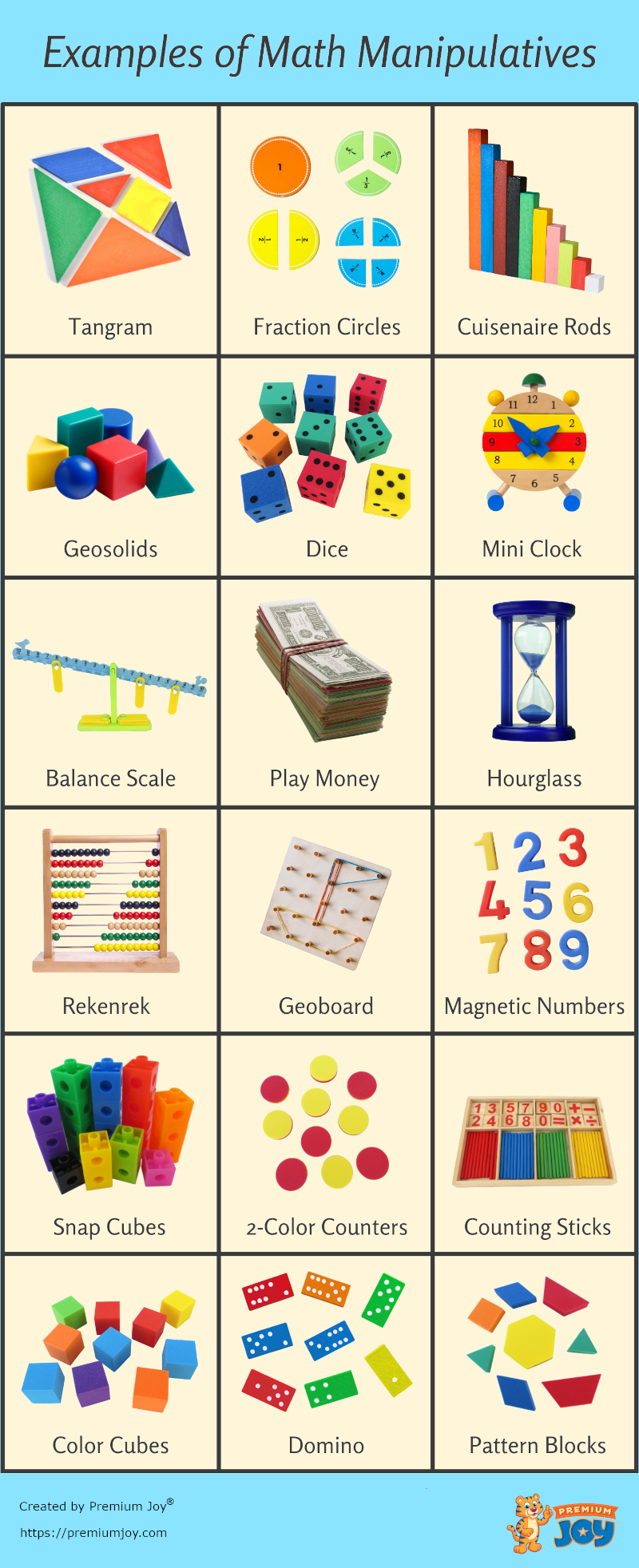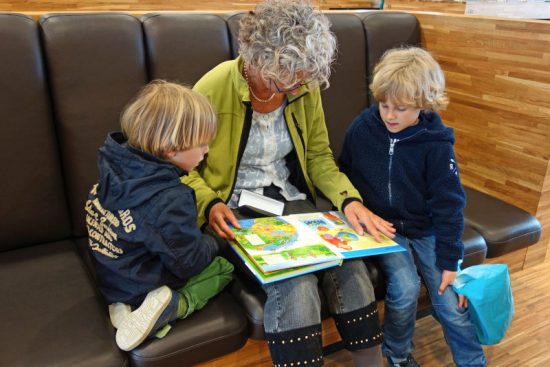This page may contain affiliate links. If you purchase something through one of the links, we may receive a commission at no extra charge to you. Still, we would include only products we actually trust and believe will be helpful for you.
Don’t miss out on opportunities to help your child learn math at home! Putting in a little extra effort outside of school can have significant positive effects in the classroom. Math manipulatives are a great way to teach your child abstract concepts and let them play at the same time.
In this blog post, we will cover what math manipulatives are, why they’re important, and some specific concepts they teach.
The information here will allow you to confidently incorporate manipulatives into your child’s routine. That will help them learn math lessons such as counting and arithmetic while boosting their confidence and encouraging problem solving.
What are Math Manipulatives?
You might be wondering what math manipulatives are, exactly. They are physical objects used as teaching tools to assist in the hands-on learning of math. Manipulatives can be used in any stage of the learning process. They may be used to introduce a concept, practice a lesson previously taught, or correct poor habits.
Math manipulatives have been used for a long time, at least for over 200 years. One of their earliest promoters was a man named Friedrich Froebel who invented the word and concept of Kindergarten in the 1800s.
For quite a while, teachers improvised math manipulatives as they saw fit to meet the needs of the students in their classroom. During the 1960s, however, educational reforms promoted standardized tools for the classroom, many of which are still used today!
There’s really no limit to what can be used as a math manipulative. They can be as simple as wooden sticks used to represent numbers or as complicated as models of the solar system used to teach concepts like gravity and velocity. No matter what form they take, they are extremely useful for helping children understand mathematical lessons.
Some of the most popular examples of math manipulatives are: unifix cubes, pattern blocks, two-color counters and geoboards.

Why are Math Manipulatives Important?
Hands-on activities are one of the best ways to learn something. Lessons tend to stick with us better if we’re directly involved in them.
Math manipulatives are great and accessible tools to give your child first-hand experience with math concepts. They provide a wide range of benefits that can carry over into other areas as well.
Active Engagement
Manipulatives can help your child actively engage with their lessons. They often look just like toys, which is more interesting for children than a piece of paper and a pencil. Making math fun encourages your child to focus on the activity, helping them learn better in the process.
Conceptualizing the Abstract
One of the difficulties of learning math is that it can feel too abstract. Numbers, time, and arithmetic are concepts that adults are familiar with, but a child with no experience can have a hard time making sense of them.
Math manipulatives are physical objects children can touch and work with, providing them with a frame of reference. Rather than having to imagine in their heads that ‘1 + 1 = 2’, they can see one block next to another block and better understand that together they make two blocks.

Building Confidence
Manipulatives offer children a chance to check their own work. This is important because it helps make them more confident in their abilities.
If asked to solve ‘2 x 3’, a child can memorize that the answer is 6, but then they may second guess their memory. However, if they have cubes to work with, they can lay out two rows of three cubes and count that they have a total of six. Now they know that they’ve done it correctly, and can feel more empowered to solve other problems.
Problem-Solving
Having objects to pick up and reorganize can be very helpful for problem-solving. If your child is only working with numbers on paper, it can be hard to understand why an equation isn’t working out correctly. But if given a model, they can try to figure it out in a variety of ways until everything seems to make sense.
For example, if the child is asked to find the surface area of a cube and keeps getting the wrong answer, they might be incorrectly thinking that a cube has four faces because a square has four sides. But if they were holding a cube, they could count the faces and see that there are six. The kid can then go back to their equation and solve it correctly!
Concepts Math Manipulatives Help Teach
Math manipulatives provide a host of general benefits, but they are also useful tools for learning specific concepts. At the preschool through elementary school level, they can improve understanding in the following areas.
Measuring
Measuring is a little more conceptual than you might think, which is why it’s a great lesson to learn through math manipulatives. The child will better understand how to relate lengths and distances to objects by actually working with items compared to trying to visualize them in their mind.
After your child understands how measuring works using simple units like blocks, you can incorporate specific, real-world units. Easing into the lesson this way can cut down on confusion and make your child an expert measurer without getting frustrated. A firm grasp of measurements is essential for more advanced concepts like calculating area or volume.
Have your child stack colorful cubes to create towers the same heights as other objects. For example, they could build a column as tall as himself! Then, they can easily count and know that they’re 6 blocks tall. Or you can have them line up the blocks along an object like the couch to measure its length.

Counting
Counting is one of the most foundational mathematical skills. It is essential to understanding and comparing numbers. Manipulatives are great for teaching this concept to young children. Having objects to point to and hold while counting out loud reinforces the lesson.
Manipulatives help children make the connection between the name of the number and how many items that number represents. They also provide a visual reference for remembering the order of numbers and their relationship to one another. Holding one block will feel a lot different than holding five! In this way, they learn that five is more than one.
Try lining up a series of 2-color counters in front of your child. As you point from one to the next, encourage them to count out loud. “One, two, three, four!” and so on. Repetition is key, so don’t be afraid to go over this many times. You can even pick up the blocks one at a time and hand them to your child as they count.
Representations
We use objects that represent numbers all the time, so it’s important for children to understand how they work. For example, denominations of money are essentially the same physical items, but they each represent different values. Play money or coins are great math manipulatives for learning this concept.
Understanding that things other than numbers can represent values is foundational to algebra. Starting with math manipulatives makes this easier for young children to learn, because they can hold a familiar item like a nickel and understand that it represents five cents. Later on, they can expand their understanding to include letters and symbols that represent numbers.
Using play coins, you can teach your child that five pennies are the same as one nickel and that two nickels are the same as one dime. This is a good starting point compared to paper bills because each coin is a different color and size. The fact that they have more noticeable differences can help your child understand better. You can make this activity a game by creating a play store for your child to run.

Arithmetic
Basic arithmetic like addition and multiplication can be taught with all sorts of math manipulatives. Because these operations are building blocks of more complicated math like algebra and geometry, it’s important for children to have a firm understanding of them.
Using manipulatives to teach arithmetic gives your child a chance to confirm their work. Because they can physically count the items in front of them, they can make sure that their answer is correct. This will make them more confident in their skill and faster at their mental math operations.
Dice can be a fun tool to teach arithmetic to children. Have your child roll the dice and then call out what operation they should do to the numbers. For example, if they roll a two and a six, you could say “Add them!” and they would say “8!”. Congratulate them and have them do it again with new numbers and a new operation. This will encourage your child to calculate quickly and accurately while also having fun.
Time
Many math problems involve time, especially once the child gets to the level of word problems and graphs. Understanding this concept, its units, and how to work with it mathematically can feel pretty abstract and requires a lot of practice, making it a perfect lesson for manipulatives.
One of the best ways manipulatives help children learn time is by giving them a frame of reference. A child has very little concept of what something like an hour is because it’s built from unfamiliar units (seconds and minutes). But manipulatives such as the hourglass offer a chance for the child to experience these units and mentally tie them to an object and an activity.
You could set up little races for your child to do as they try to beat an hourglass. Many board games come with one, so you might already have one at home. Simply flip it over and ask your child to complete a task, perhaps solving a simple puzzle or drawing a certain character before the sand runs out. From this basic understanding, you can start educating your child on what seconds, minutes, hours, and days are so that they are well equipped to work with time mathematically.
Shapes
Recognizing geometric shapes is another core concept of math that manipulatives are well-suited to teach. You can use a variety of tools, including a geoboard, to help your child see and create shapes.
Math manipulative activities reinforce the child’s shape recognition skills by giving them clear examples that they can create himself. It might seem simple to say that a square has four sides, but a child will learn much quicker if they have a square to see and other shapes to compare it to. Knowing basic shapes will give the child a starting point to learn how many sides, faces, and angles those shapes have so that they can do more advanced math like geometry.
The hands-on nature of a geoboard will reinforce the idea of shape-making in your child. Ask them to create different sequences of shapes or shape sizes. For example, you could say, “Make a pattern that goes triangle, square, triangle, square.” Or you could say, “Make a pattern that goes big circle, little circle, big circle, little circle.” This activity helps them learn shape names and understand that the same shape can be different sizes.

Benefits in the Classroom
No matter where your child is in their development, manipulatives can help them better understand core mathematical concepts and make them a better overall student. Using physical objects to learn not only makes the lessons easier to understand but makes learning more fun at the same time.
This props them up for success which can have a significantly positive impact on their experience in school. So take this opportunity to incorporate some math manipulatives into your home routine and watch your child learn and develop in significant ways!




